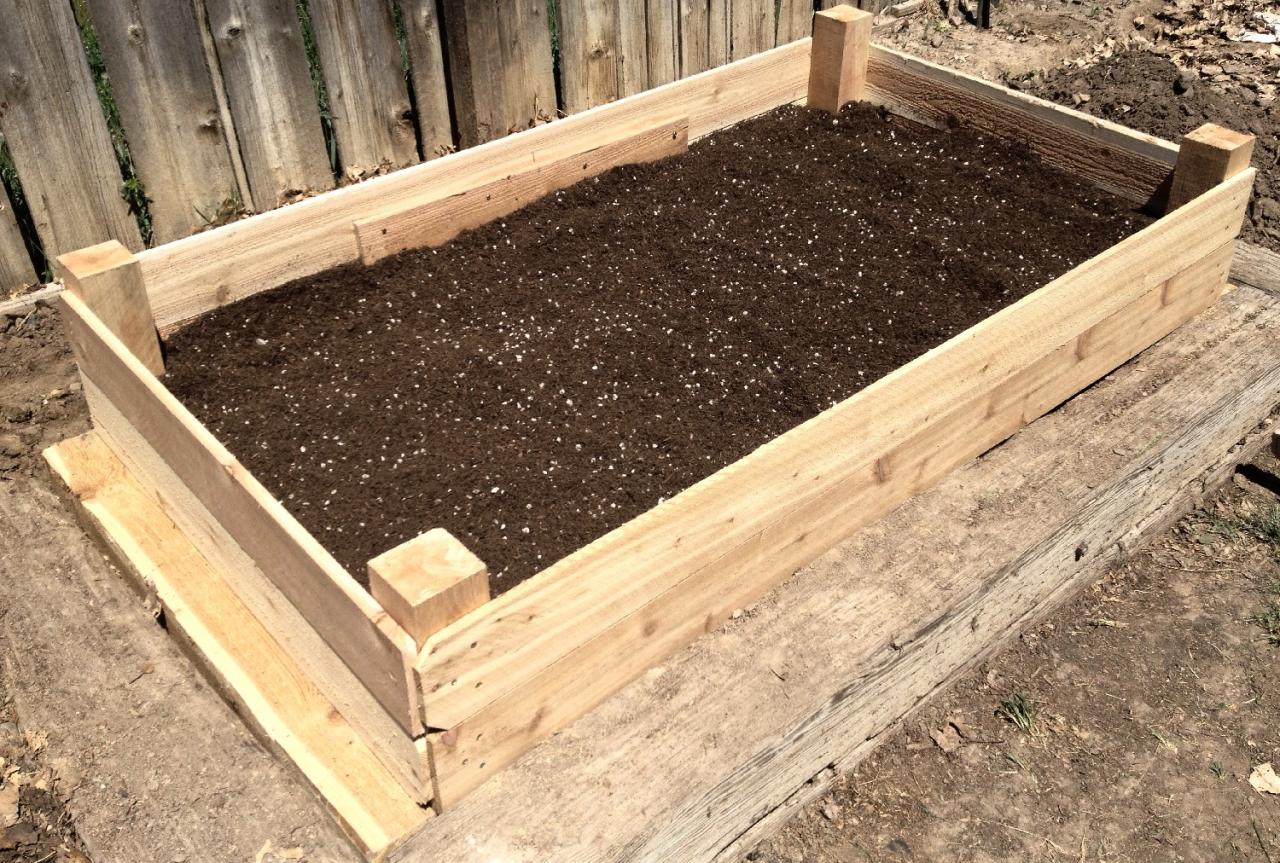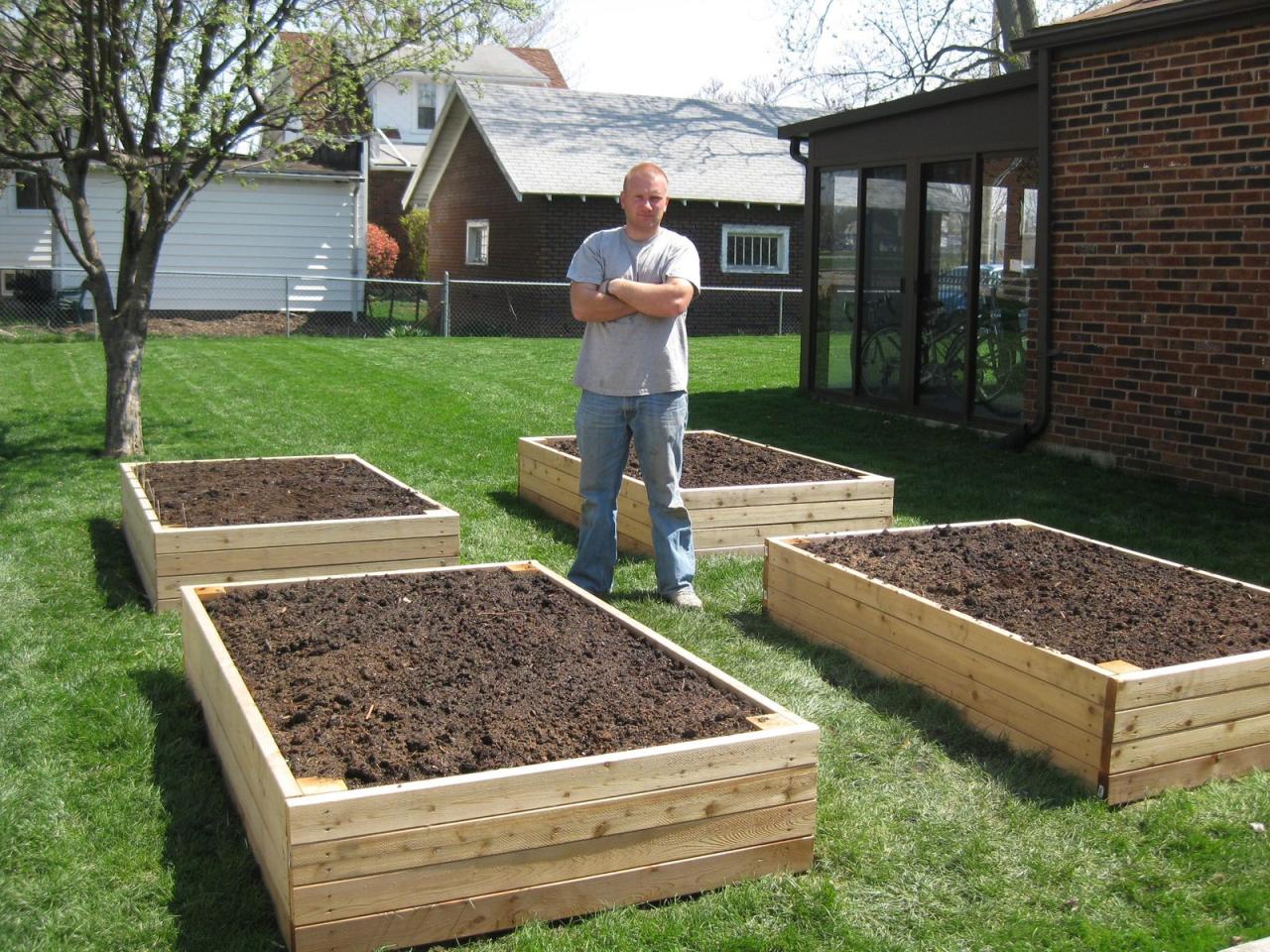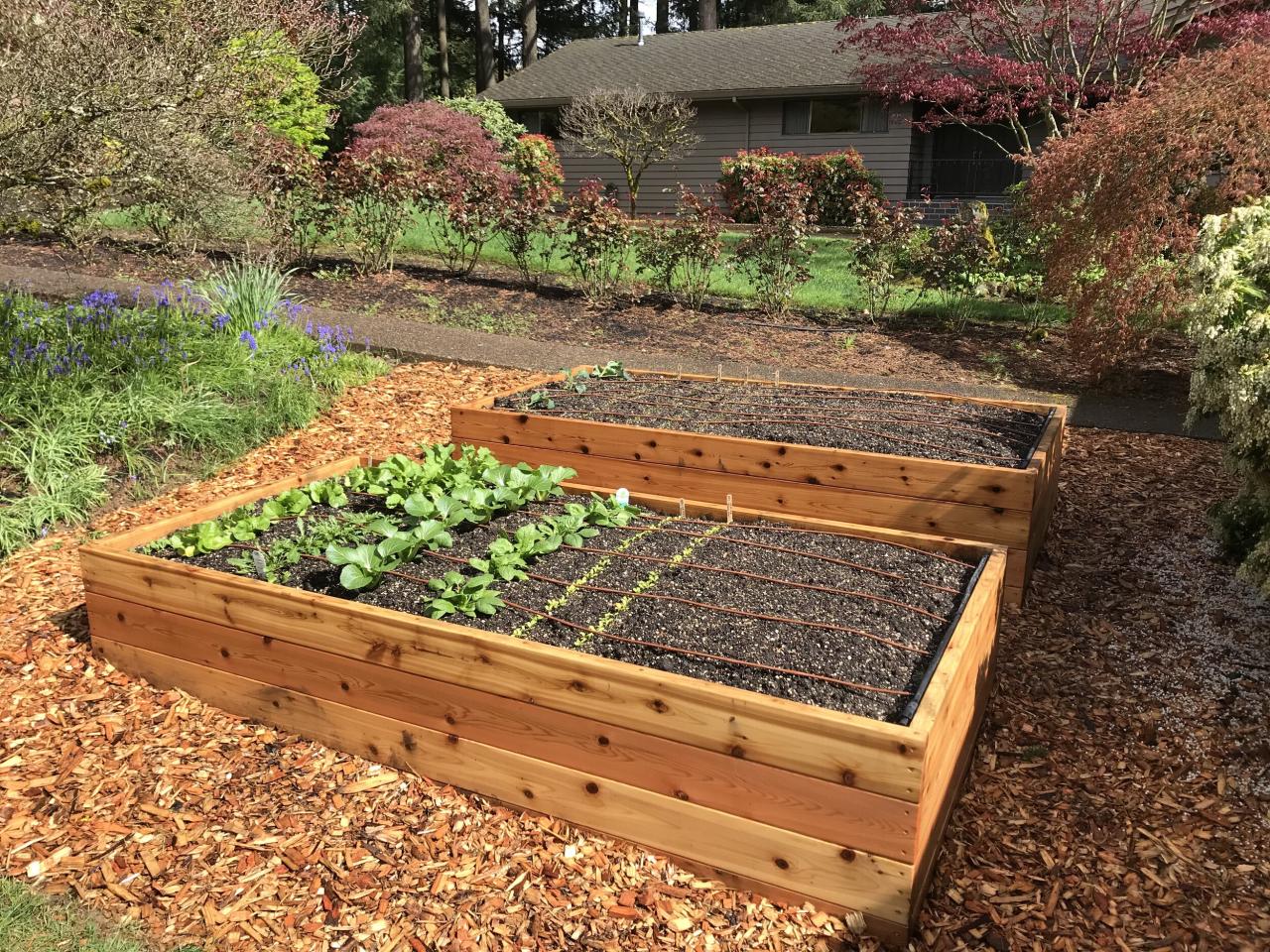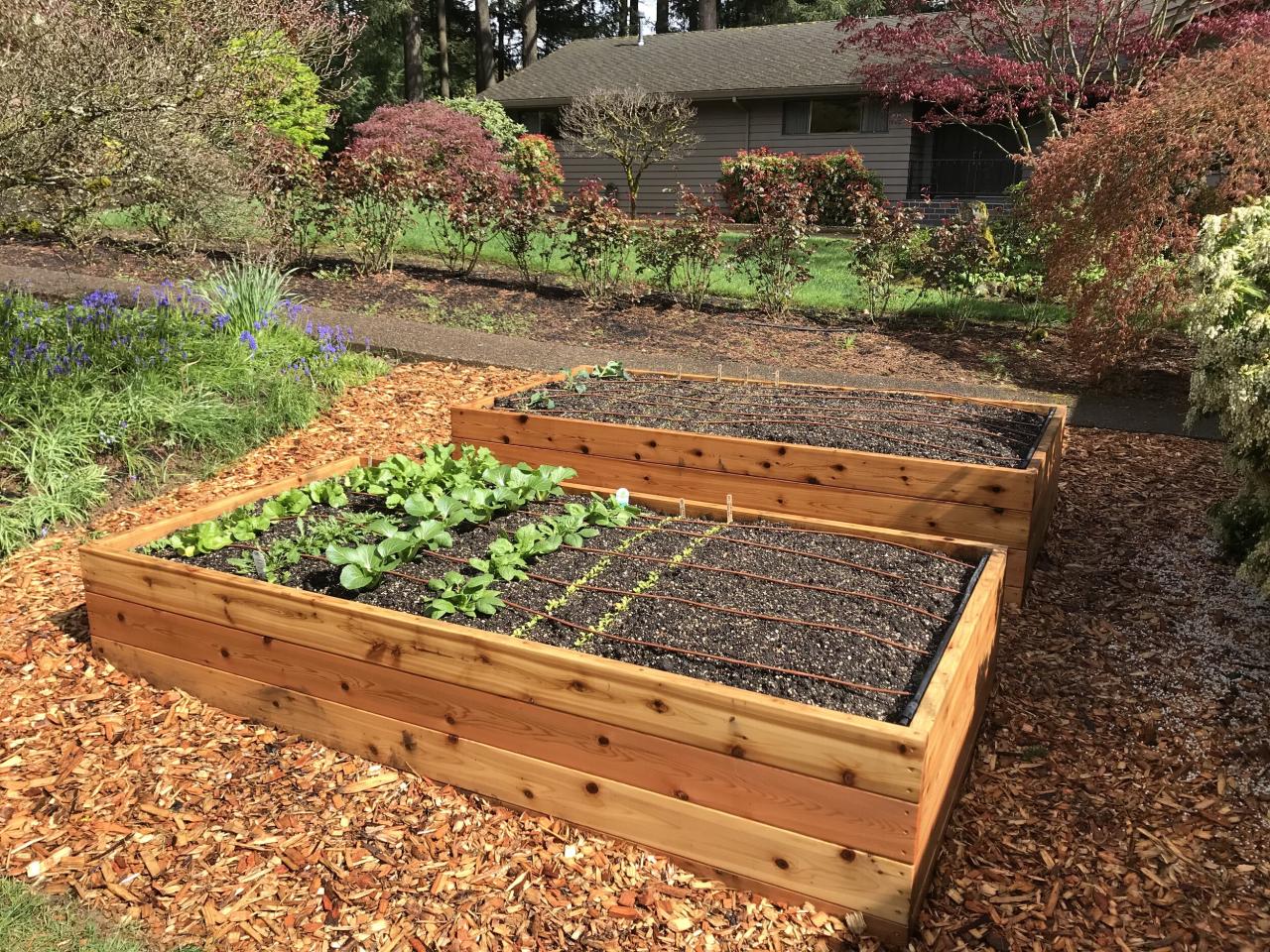Why Some Vegetables Don’t Thrive in Raised Beds? While raised beds offer numerous advantages for gardeners, they can also pose challenges for certain vegetables. Understanding the specific needs of different vegetables and how raised beds can impact those needs is crucial for successful gardening.
Raised beds, with their controlled environment and improved drainage, often provide a boost to vegetable growth. However, not all vegetables thrive in these elevated structures. Factors like soil composition, root depth requirements, sunlight exposure, and nutrient availability can all influence a vegetable’s success in a raised bed.
This article delves into these factors, highlighting why some vegetables struggle while others flourish in this popular gardening method.
Soil Composition and Drainage

Raised beds offer a unique growing environment compared to in-ground gardens, influencing soil composition and drainage, which directly impact vegetable growth.
Soil Composition in Raised Beds
Raised beds provide a controlled environment for growing vegetables, allowing for the creation of a customized soil mix. The soil composition in raised beds typically differs from that found in in-ground gardens. Raised bed soil is often lighter and airier, with a higher proportion of organic matter, such as compost, manure, and shredded leaves.
While raised beds offer many benefits, some vegetables may struggle due to factors like soil composition and drainage. For instance, root vegetables like carrots and beets often prefer a deeper soil profile than raised beds can provide. However, if you’re battling a persistent poison ivy infestation along your garden pathways, consider tackling it first by following the expert advice outlined in Best Techniques for Safely Removing Poison Ivy from Garden Pathways.
Once the pathways are clear, you can focus on ensuring your raised beds have the right soil conditions for your chosen vegetables.
This improved soil structure promotes better drainage and aeration, which are crucial for healthy root development and nutrient uptake.
Impact of Drainage on Vegetable Growth in Raised Beds
Drainage is a critical factor influencing vegetable growth in raised beds. Excessive waterlogging can lead to root rot, while poor drainage can hinder root growth and nutrient uptake. The ideal soil moisture level for most vegetables is a balance between adequate moisture retention and good drainage.
Vegetables Preferring Well-Drained Soil, Why Some Vegetables Don’t Thrive in Raised Beds
Many vegetables thrive in well-drained soil, as they are susceptible to root rot and fungal diseases in overly wet conditions. These vegetables include:
- Tomatoes
- Peppers
- Eggplants
- Cucumbers
- Melons
- Squash
- Carrots
- Beets
- Radishes
- Onions
- Garlic
Vegetables Thriving in Moist Conditions
Some vegetables, such as leafy greens, prefer moist soil conditions, as they require consistent moisture for optimal growth. Examples of these vegetables include:
- Lettuce
- Spinach
- Kale
- Collard Greens
- Swiss Chard
Drainage Characteristics of Different Soil Types
The drainage characteristics of different soil types commonly used in raised beds vary significantly, impacting vegetable growth. Here is a table comparing the drainage characteristics of different soil types:
Soil Type |
Drainage Characteristics |
Suitable for |
|---|---|---|
Sandy Soil |
Excellent drainage |
Vegetables that prefer well-drained soil |
Loamy Soil |
Good drainage |
Wide range of vegetables |
Clay Soil |
Poor drainage |
Vegetables that tolerate moist conditions |
Root System Requirements
The depth of your raised bed can significantly impact the growth of certain vegetables. While some thrive in shallower environments, others require a substantial amount of space for their root systems to develop fully. This section will explore the root system requirements of various vegetables and their suitability for raised beds.
While raised beds offer many benefits, certain vegetables might struggle due to factors like soil composition or drainage. Just as you’d need to consider protection from harsh weather for your hanging plants, as explained in this helpful guide on How to Protect Your Hanging Plants from Harsh Weather , raised beds can also present challenges.
For instance, some vegetables require deeper roots, which may not be accommodated in shallower raised bed setups. Understanding these limitations is crucial for ensuring successful vegetable growth in raised beds.
Root System Depth and Vegetable Growth
Understanding the root systems of different vegetables is crucial for successful gardening. Deep-rooted vegetables, such as carrots, beets, and parsnips, need sufficient soil depth for optimal growth. Shallow raised beds, typically around 12 inches deep, might not provide enough space for these vegetables to fully develop their root systems.
This can lead to stunted growth, smaller yields, and even difficulties in harvesting.
The importance of soil depth for root development cannot be overstated. Roots act as anchors, providing stability to the plant. They also absorb water and nutrients from the soil, transporting them to the rest of the plant. A deep root system allows the plant to access a wider range of resources, promoting healthy growth and vigorous yields.
Comparing Root Systems of Vegetables
To better understand the suitability of various vegetables for raised beds, it’s helpful to compare their root systems. Here’s a breakdown of some common vegetables and their root system characteristics:
Vegetable |
Root System Depth |
Suitability for Shallow Raised Beds |
|---|---|---|
Carrots |
18-24 inches |
Not ideal |
Beets |
12-18 inches |
May be suitable with deep soil amendments |
Parsnips |
18-24 inches |
Not ideal |
Tomatoes |
12-18 inches |
Generally suitable |
Lettuce |
6-8 inches |
Ideal |
Radishes |
4-6 inches |
Ideal |
As you can see, vegetables with deep root systems, such as carrots and parsnips, are less suitable for shallow raised beds. However, vegetables with shallower root systems, like lettuce and radishes, thrive in these environments.
Sunlight and Temperature
Sunlight and temperature play crucial roles in the successful growth of vegetables in raised beds. Understanding the light and temperature requirements of specific vegetables is essential for maximizing their yield and ensuring their health.
Sunlight Exposure and Vegetable Growth
Sunlight provides the energy for photosynthesis, the process by which plants convert light energy into chemical energy for growth. Most vegetables require a minimum of six hours of direct sunlight daily for optimal growth. However, the specific sunlight requirements vary depending on the vegetable type.
Influence of Raised Beds on Soil Temperature
Raised beds can influence soil temperature compared to in-ground gardens. The raised structure allows for better drainage, which can lead to faster warming of the soil in the spring and faster cooling in the fall. The soil in raised beds is also generally warmer than in-ground soil due to the increased exposure to sunlight.
Sunlight Requirements for Vegetables
- Full Sun:These vegetables thrive in locations receiving at least six hours of direct sunlight daily. Examples include tomatoes, peppers, cucumbers, squash, beans, and melons.
- Partial Shade:These vegetables prefer locations with four to six hours of direct sunlight and some shade during the hottest part of the day. Examples include lettuce, spinach, kale, carrots, and broccoli.
Temperature Requirements for Vegetables
- Warm-Season Vegetables:These vegetables prefer warm temperatures and are typically planted in the spring or summer. Examples include tomatoes, peppers, cucumbers, squash, beans, and melons.
- Cool-Season Vegetables:These vegetables thrive in cooler temperatures and are typically planted in the fall or early spring. Examples include lettuce, spinach, kale, carrots, and broccoli.
Table Categorizing Vegetables by Sunlight and Temperature Requirements
Vegetable |
Sunlight Requirement |
Temperature Requirement |
|---|---|---|
Tomatoes |
Full Sun |
Warm-Season |
Peppers |
Full Sun |
Warm-Season |
Cucumbers |
Full Sun |
Warm-Season |
Squash |
Full Sun |
Warm-Season |
Beans |
Full Sun |
Warm-Season |
Melons |
Full Sun |
Warm-Season |
Lettuce |
Partial Shade |
Cool-Season |
Spinach |
Partial Shade |
Cool-Season |
Kale |
Partial Shade |
Cool-Season |
Carrots |
Partial Shade |
Cool-Season |
Broccoli |
Partial Shade |
Cool-Season |
Nutrient Availability
Raised beds, while offering many benefits, can sometimes pose challenges in terms of nutrient availability for plants. Understanding the differences in nutrient levels between raised beds and in-ground gardens is crucial for successful gardening.
Soil Testing for Raised Beds
Soil testing is essential for determining the nutrient content of your raised bed soil. It provides valuable information about the levels of key nutrients, such as nitrogen (N), phosphorus (P), and potassium (K), which are essential for plant growth. Soil tests can also identify potential problems like soil pH imbalances or deficiencies in other micronutrients.
Soil testing helps to ensure that your raised bed soil is balanced and provides the right nutrients for your plants.
- Soil testing kits are readily available online and at garden centers.
- Follow the instructions carefully to ensure accurate results.
- Based on the test results, you can amend your soil with appropriate fertilizers to meet the specific needs of your vegetables.
Examples of Vegetables Sensitive to Nutrient Deficiencies
Certain vegetables are more susceptible to nutrient deficiencies than others. These vegetables often require specific nutrients for optimal growth and may show signs of distress if these nutrients are lacking.
- Tomatoes: Tomatoes are heavy feeders and require adequate nitrogen, phosphorus, and potassium. Deficiency symptoms include stunted growth, yellowing leaves, and poor fruit production.
- Lettuce: Lettuce requires a balanced supply of nutrients, especially nitrogen. Deficiency symptoms include stunted growth, pale green leaves, and a bitter taste.
- Spinach: Spinach requires a significant amount of nitrogen and magnesium for healthy growth. Deficiency symptoms include yellowing leaves, stunted growth, and reduced yield.
Amending Raised Bed Soil with Nutrients
Amending your raised bed soil with appropriate nutrients based on the specific needs of your vegetables is crucial for successful gardening.
- Compost: A rich source of organic matter that improves soil structure, water retention, and nutrient availability.
- Manure: Provides a slow-release source of nitrogen, phosphorus, and potassium.
- Fertilizers: Provide specific nutrients to address deficiencies identified by soil tests. Choose fertilizers based on the needs of your plants and the type of soil.
Pest and Disease Management

Raised beds can provide a unique environment for vegetable growth, but they can also influence the prevalence of pests and diseases. Understanding how raised beds affect pest and disease pressure and implementing effective management strategies are crucial for maximizing yield and maintaining healthy plants.
Common Pests and Diseases in Raised Beds
Raised beds, with their distinct soil composition and microclimate, can attract specific pests and diseases. Common pests include aphids, whiteflies, slugs, and snails, while diseases like powdery mildew, fungal leaf spots, and root rot can affect vegetables.
Preventing and Controlling Pests and Diseases
- Choose disease-resistant varieties:Selecting vegetable varieties known for their resistance to common pests and diseases is a proactive step towards prevention. For example, choosing tomato varieties resistant to late blight can significantly reduce the risk of this devastating disease.
- Practice crop rotation:Rotating crops annually helps disrupt pest and disease cycles. By planting different vegetables in the same bed each year, you prevent the buildup of specific pathogens and pests associated with particular plant families.
- Maintain good sanitation:Removing and disposing of infected plant debris promptly helps reduce the spread of diseases. Regularly cleaning tools and equipment used in the garden also prevents contamination.
- Use beneficial insects:Introducing beneficial insects like ladybugs, lacewings, and parasitic wasps can help control pest populations naturally. These insects prey on common garden pests, reducing the need for chemical intervention.
- Use organic pest control methods:Natural pest control methods like insecticidal soap, neem oil, and diatomaceous earth can effectively manage pests without harming beneficial insects or the environment.
- Water appropriately:Overwatering can create favorable conditions for fungal diseases. Ensure proper drainage and water only when the soil is dry to the touch.
- Monitor for pests and diseases:Regular inspection of plants for signs of pests and diseases allows for early detection and intervention. This proactive approach helps prevent widespread infestations or outbreaks.
Pest and Disease Management Strategies for Raised Beds
Pest/Disease |
Prevention Strategies |
Control Strategies |
|---|---|---|
Aphids |
Plant companion plants like garlic and onions. |
Use insecticidal soap or introduce ladybugs. |
Whiteflies |
Use yellow sticky traps to monitor populations. |
Release parasitic wasps or use neem oil. |
Slugs and Snails |
Create barriers with copper tape or diatomaceous earth. |
Hand-pick or use slug bait. |
Powdery Mildew |
Choose resistant varieties and provide good air circulation. |
Use a baking soda solution or neem oil spray. |
Fungal Leaf Spots |
Remove infected leaves promptly and water at the base of plants. |
Use copper fungicide or a diluted baking soda solution. |
Root Rot |
Ensure good drainage and avoid overwatering. |
Use a fungicide or consider soil replacement. |
Watering and Irrigation
Watering raised beds effectively is crucial for successful vegetable growth, but it presents unique challenges compared to in-ground gardens. The smaller volume of soil in raised beds dries out faster, requiring more frequent watering. Understanding the specific needs of your vegetables and implementing an efficient irrigation system is essential for thriving plants.
Consistent Watering for Vegetable Growth
Consistent watering is vital for healthy vegetable growth. Vegetables require a consistent supply of moisture to support their growth processes, including nutrient uptake, photosynthesis, and transpiration. When the soil dries out excessively, it can stress plants, leading to stunted growth, wilting, and even death.
Conversely, overwatering can suffocate roots and create an environment for disease.
Irrigation Methods for Raised Beds
Different irrigation methods are suitable for raised beds, each with its advantages and disadvantages.
Drip Irrigation
Drip irrigation is an efficient and water-conserving method that delivers water directly to the root zone of plants. It involves using a network of tubes and emitters that slowly release water, minimizing evaporation and runoff. Drip irrigation is particularly beneficial for raised beds, as it allows for precise water delivery and prevents excessive soil saturation.
Soaker Hoses
Soaker hoses are a simpler and more affordable alternative to drip irrigation. They are long, porous hoses that release water slowly along their length. Soaker hoses are ideal for watering rows of vegetables, but they may not be as precise as drip irrigation.
Hand Watering
Hand watering is the most common method, but it can be time-consuming and labor-intensive, especially for large raised beds. It is important to water deeply and thoroughly, ensuring that the soil is moistened to the root zone.
Setting Up an Irrigation System for Raised Beds
Setting up an irrigation system for raised beds is a straightforward process that involves several steps:
1. Plan your system
Determine the size and shape of your raised beds and the types of vegetables you will be growing. This will help you decide on the appropriate irrigation method and components.
2. Choose an irrigation method
Consider the factors mentioned above, such as your budget, time constraints, and the specific needs of your vegetables.
3. Install the system
Follow the manufacturer’s instructions for installing your chosen irrigation system. This may involve laying out hoses, connecting emitters, and adjusting water flow rates.
4. Test and adjust
Once installed, test your irrigation system to ensure that it is working properly and delivering water evenly to all plants. Make adjustments as needed to optimize water delivery.
5. Monitor and maintain
Regularly monitor your irrigation system and make any necessary repairs or adjustments to ensure optimal performance.
Final Conclusion

By understanding the specific needs of your vegetables and how raised beds can impact those needs, you can optimize your garden for success. Choose vegetables that thrive in well-drained soil, provide adequate depth for deep-rooted varieties, and ensure proper sunlight exposure.
Regular soil testing and targeted amendments will help maintain optimal nutrient levels. With careful planning and attention to detail, you can enjoy a bountiful harvest from your raised beds, even with vegetables that can be challenging to grow in these environments.
Question & Answer Hub: Why Some Vegetables Don’t Thrive In Raised Beds
What are some common vegetables that struggle in raised beds?
Vegetables with deep root systems, such as carrots, beets, and parsnips, may struggle in shallow raised beds. Additionally, vegetables that prefer moist conditions, like spinach and lettuce, may experience dryness in raised beds with poor drainage.
How can I improve drainage in a raised bed?
Use a well-draining soil mix, such as a blend of compost, potting soil, and perlite. Ensure that the bottom of the raised bed has adequate drainage holes to allow excess water to escape.
Can I grow tomatoes in raised beds?
Yes, tomatoes can thrive in raised beds, especially when provided with adequate support and proper watering.
How often should I water my raised beds?
The frequency of watering depends on factors like weather conditions, soil type, and the specific needs of your vegetables. It’s important to monitor the moisture levels in your raised beds and water when the soil feels dry to the touch.
